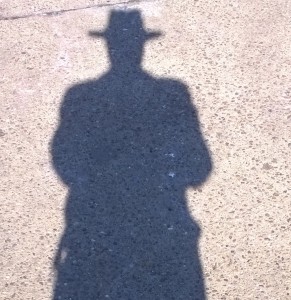On February 23, 1942, just 69 days after the attack on Pearl Harbor, a Japanese long range submarine, I-17 class, attacked the Barnsdall-Rio Grande Oil Field at Ellwood, California, which is just twelve miles north of Santa Barbara. Their attack consisted of firing shells from 5.5 inch deck guns for approximately twenty minutes. They targeted various oil wells along the coastline, including the Bankline Oil Company Refinery. One shell hit a derrick, causing some damage, but, fortunately, no loss of life. Three shells landed near the refinery but inflicted no damage. The other shells failed to hit their targets as the submarine moved slowly, paralleling the coast.
How did this attack unfold? At 7:58 PM local time, the Fourth Interceptor Command ordered all radio stations in Southern California off the air. Simultaneously, air-raid sirens were sounded in Santa Barbara. Within a few moments, the coastline was blacked out from Carpinteria to Goleta, California, an area of almost twenty-five miles.
Eyewitness reports of the Japanese submarine began coming into the Ventura County Sherriff’s office. The first report came from San Marcos Pass, northwest of Santa Barbara, after hearing the first cannon shot. The observer used field glasses to sight the submarine, which they estimated was located about one mile off shore. The final call came in at approximately 8:30 PM; a minister observed the submarine exiting the Santa Barbara Channel. This same minister also reported he witnessed flashing signal lights by someone on shore. Later, four Japanese and one Italian were arrested. However, there were additional Japanese collaborators. For two hours after the Japanese raid, yellow flares were shot over Ventura County to signal the Japanese submarine. None of these individuals were ever caught.
The extent of the damage from the raid was minimal. Some shells landed short of the extensive oil installation; some exploded and blew holes in the machinery. Fortunately, their shells just missed several high-octane gasoline tanks.
Interestingly enough, the Japanese submarine remained in the area for another month, traveling up and down along the shipping coastline between Cape Mendocino and San Francisco, attacking various targets. The submarine sunk or damaged oil freighters, shelled shore installations in California, Oregon and Washington; it even launched miniature aircraft to start forest fires with incendiary bombs in Oregon forests. At the end of March, they returned to their home base at Yokosuka, Japan.
The Japanese considered reaching the American mainland a great victory. It was celebrated by the Japanese government and navy, who even printed special commemorative postcards so the event could be circulated around the world. This was the first attack by a foreign power on the continental United States since the War of 1812.
How did the United States react to this raid and the attack on Pearl Harbor? General Jimmy Doolittle B-25 bombing raided Tokyo on April 23, 1942. (Insert blog link) The attack was a success and a great boost to American morale.
Do you wonder how the Japanese knew where to attack and operate relatively undetected? The submarine was piloted by Captain Kozo Nishino, a former Japanese tanker captain who often dined as a guest of Bankline Oil company when his ship was anchored offshore prior to World War II.

